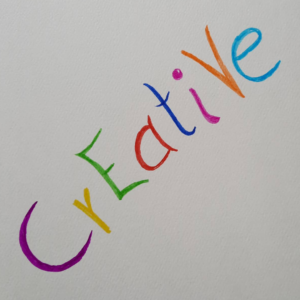
Headstand technique
I think this technique is great because I really like perspective shifts and this technique takes it to the extreme. Namely, the question becomes reversed to “what can I do to avoid solving the problem in the first place or to make it worse?”
Similar to brainstorming, the idea is to come up with as many ideas as possible in a given amount of time, but the idea is to make everything worse. This can lead to some laughs. Of course, it brings the most fun and results in small groups, but even alone such a change of perspective is really helpful.
When the time is up, all ideas are looked at again to see if they would really be feasible (keyword: fairy). The next step is to turn around again, i.e. to leave the headstand: If I do the opposite, would it improve my problem/situation? Usually at this point one then comes from a more unusual side.
Walt Disney Method
different roles: Dreamer, Realist and Skeptic. The dreamer may
really think up anything, the realist checks for feasibility and the skeptic
skeptic tries to find possible pitfalls. You can “go it alone” by going through all the roles yourself, or in a group. Especially the dreamer corner benefits from more than one person.
6 Hats Method
Similar to the Walt Disney Method, in this technique the participants slip into different roles, symbolized by different colored hats. During the creative process, they are supposed to stay “in character” and discuss according to the hat color.All participants put on the different hats one after the other and say what they have to say about the problem in this role. The statements are recorded in writing. This can also be done covertly so that the individual roles do not influence each other.
There are the following roles:
White
— Analytical thinking
— Concentration on facts
— Objective attitude
Red:
— Emotional thinking and feeling
— Concentration on feelings and opinions
— Subjective attitude
Black:
— Critical thinking
— Describing risk consideration, problems, skepticism, criticism, and fears.
— Objective attitude
Yellow:
— Optimistic thinking
— What is the best-case scenario
— Speculative attitude
Green:
— Creative, associative thinking
— New ideas, creativity
— Constructive attitude
(No critical comments, that’s what the black hat is for).
Blue:
— Orderly, facilitative thinking
— Overview of processes
— Big picture attitude
(the blue hat can also be used purely by one person, who is then the moderator)
Brainstorming
One, if not the best known, method. For a given problem, as many solutions as possible are generated in a given time. These solutions may also be totally absurd. “A wish from a fairy godmother” would also be possible. There is no rating or evaluation. When the time is over or no more ideas come in, it is time to take a closer look at the ideas for feasibility. This is the time when the fairy thing is probably sorted out. Nevertheless, it is important, because a nudge from a devious corner almost always brings momentum into the thoughts to think unconventionally – or at least provides for laughter and thus for relaxation.
At the end of the sorting process, there should be 3-5 possibilities left that look feasible, at least at first glance, and can then be pursued further.
This method is most effective in small groups. Using it alone also works, but there are significantly fewer possibilities. If you are stuck in a mental carousel, it is not recommended (alone). However, adding another person helps.
The biggest mistake, but one that is always made: brainstorming with evaluation of ideas right at the beginning. This slows down immediately. And killer arguments like “we’ve never done that before” are the death of new ideas. So: really allow everything in the first step and only then sort it out.
Similarities
All methods have in common that they work best in a small group. And all methods thrive on the fact that at least part of the group (if not the whole group) is allowed to “goof around” freely and without judgment. One point that is rarely mentioned, but makes everything easier, is humor. Always a good door opener and if I as a facilitator have no problem laughing at myself, the mood in the group changes immediately – and a lot more even unconventional ideas come together.
By the way: without a bit of “goofing around” my bucket list wouldn’t even exist.
